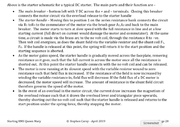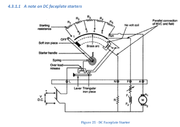Rob Lawes
Member
Having read a number of descriptions of the Marconi set fitted to the Titanic I wonder if anyone can confirm a technical point regarding the power supply.
I've recently read that the 100VDC power supply to the motor set was via a graduated switch. In order to protect the motor the system was brought up to speed slowly by stepping up the power supply one step at a time.
Once fully running, the motor starter switch was held on by an electro magnet which, in the event of a loss of the 100VDC supply would cause the switch to spring back, cutting the power to the system and preventing damage from a surge when the power supply was restored.
Does anyone know if this was definitely the case?
I've recently read that the 100VDC power supply to the motor set was via a graduated switch. In order to protect the motor the system was brought up to speed slowly by stepping up the power supply one step at a time.
Once fully running, the motor starter switch was held on by an electro magnet which, in the event of a loss of the 100VDC supply would cause the switch to spring back, cutting the power to the system and preventing damage from a surge when the power supply was restored.
Does anyone know if this was definitely the case?




